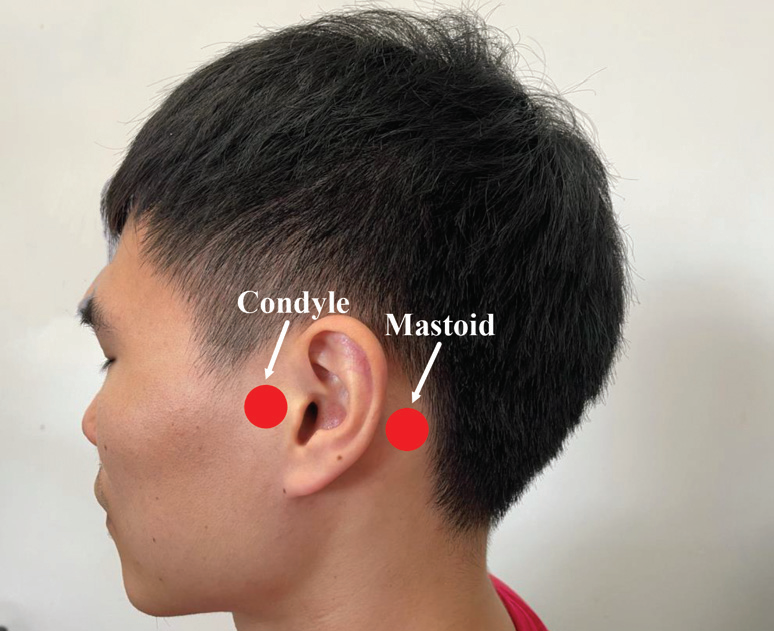Hearing is an important human sense to perceive and judge the surrounding environment, and it is essential for communication. People perceive sounds in two ways, where one is air conduction (AC) and the other is bone conduction (BC). The former is the process by which sound waves travel through the outer ear and middle ear and arrive at the cochlea, the latter is the process by which sound waves vibrate the bones of the skull to stimulate the cochlea. Nowadays, bone conduction devices (BCDs) are widely used in audiometric tests, hearing rehabilitation, and communication systems. The output properties of BCDs are affected by the mechanical impedance of the load. In clinical audiology, the excitation position of BCDs is mainly the mastoid. With the advantage and development of BC, BCDs are gradually used in communication systems, and the excitation position of bone conduction headphones is mainly the condyle. Several researches have measured and analyzed the mechanical impedance of the mastoid, however, no researches have measured and analyzed the mechanical impedance of the condyle at the now commonly used bone conduction excitation position.
Therefore, researchers from the Institute of Acoustics of the Chinese Academy of Sciences (IACAS) measured the mechanical impedance of the mastoid and condyle in 100 Chinese subjects and predicted the effect of the difference in mechanical impedance on the output of BCDs through model simulations.
The results show that the mastoid and condyle impedances within the same subject differ significantly and the impedance differences between subjects at the same stimulation position are mainly below the resonance frequency. The mechanical impedance of the mastoid is significantly influenced by age, and not related to gender or body mass index (BMI). While the mechanical impedance of the condyle is significantly affected by BMI, followed by gender, and not related to age. There are some differences in mastoid impedance between the Chinese and Western subjects. An analogy model predicts that the difference in mechanical impedance between the mastoid and condyle leads to a significant difference in the output force of the bone conduction devices. The results of this study can be used to develop condyle simulators and mastoid simulators adapted to the Chinese subjects, which can evaluate, predict, and calibrate BCDs.
The research, published online in the international journal The Journal of the Acoustical Society of America, was supported by the National Science Fund of China (No.12074403, No.11974086).

Figure 1 The location of the mastoid and the condyle.

Figure 2 (A) Comparison of the impedance of the artificial mastoid B&K 4930 with the mean mastoid impedance and the mean condyle impedance measured in the present study. (B) The output force magnitude of the transducer model loaded with the artificial mastoid B&K 4930 impedance (dotted line), the mean mastoid impedance (dashed line) and the mean condyle impedance (solid line).
Reference:
Yafei Nie, Jie Wang, Chengshi Zheng, Jian Xu, Xiaodong Li, Yu Wang, Bo Zhong, Juanjuan Cai and Jinqiu Sang. Measurement and modeling of the mechanical impedance of human mastoid and condyle. The Journal of the Acoustical Society of America. 2022 ; 151(3):1434.DOI: 10.1121/10.0009618.
Contact:
ZHOU Wenjia
Institute of Acoustics, Chinese Academy of Sciences, 100190 Beijing, China
E-mail: media@mail.ioa.ac.cn


